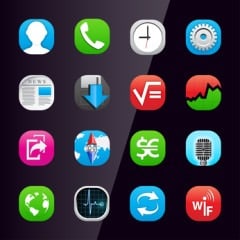
Enterprise organizations are often the last ones to take up any new technology and there’s good reason for that: revenue. Here, RTInsights contributor Kurt Collins explains how real-time technology and Mobile Backend-as-a-Service (MBaaS) is revolutionizing the enterprise in the Internet of Things (IoT) age.
Technology decisions can disrupt existing processes. When revenue is at stake, those decisions can be costly. Real-time database storage synchronization and communication is not one of those technologies. Real-time is one of the fundamental technologies required to bind the Internet of Things (IoT) together with existing enterprise infrastructure. Real-time communications, combined with IoT, is the next generation for enterprise technology development.
Real-time communication has revolutionized the online consumer space. Since the early days of AOL, instant messaging (IM) has been one of the driving forces of growth in the online space. Eventually, that drive for connection people yearned for blossomed into social networks. Those same social networks then did something the technology industry is famous for: they disrupted their own business and transformed themselves into platforms. Regardless of that, let’s not lose sight of the fact that all of this (arguably) came about because of our need to communicate with each other.
Raising the gaze from individuals to enterprise organizations, the rise of real-time has driven a revolution in how organizations communicate, both internally and externally. Opportunities for immediate and relevant customer interaction and brand marketing have increased dramatically due to social platforms such as Twitter and Facebook. Internally, employee productivity has been forever altered by the advent of real-time communications. Decision making is more easily decentralized when your employees are empowered to communicate in real-time with each other.
Real-Time to Revolutionize the Enterprise
The same revolution is about to take place on the technology side of enterprise. The power of the IoT in enterprise lies in the fact that the sensory input of the organization will increase tenfold (if not more). In manufacturing, devices can be deployed all throughout the process, providing constant status updates on whether or not the line is efficiently operating. In logistics, delivery trucks can have a constant connection to the home office for up-to-the-second updates. In retail, stores throughout the region can relay a constant stream of inventory information to the regional warehouse. And that’s just a sliver of the potential that real-time and the IoT can bring to enterprise.
There are going to be some problems, though. IoT will bring about a massive increase in data that needs to be interpreted and analyzed, with actions needing to be shipped back out to the network’s edge. Each one of these devices will be operating at the edge of an enterprise’s network. However, the way our technological infrastructure is currently engineered, it’s based upon a strict client/server model. Today, most organizations have designed their architecture in such a way as to require decision making to happen at the data center level. Given the amount of data that IoT is about to bring to bear, a change will be required.
Mobile Backend-as-a-Service and Real-Time
This is where Mobile-Backend-as-a-Service (MBaaS) with real-time can play a powerful role: during the transition phase and afterwards. Similar to employee interaction inside of enterprise organizations, decision making will need to move to the edges. The devices monitoring the efficiency of a manufacturing line shouldn’t send every piece of data back to the data center and wait for a response. Instead, they should only request actions if there’s an anomaly in the line. Increasingly, each cluster of devices will have to learn to deal with specific situations (whether or not they are routine errors). Each device cluster will be specialized and programmed to deal with their specific issues. Just as a marketing department or sales department is trained to deal with their own specific situations, so, too, will be enterprise IoT-connected devices.
An MBaaS solution with real-time is the perfect solution to quickly build micro-services around clusters of IoT-connected devices. Empowering engineers to create and rapidly deploy software to the edges of a network is important. This will allow enterprise organizations to rapidly respond to any changes and unforeseen circumstances that arise. The next wave of innovation in enterprise is going to be around building services to support the massive amount of sensory input coming in from all segments of the organization.




























